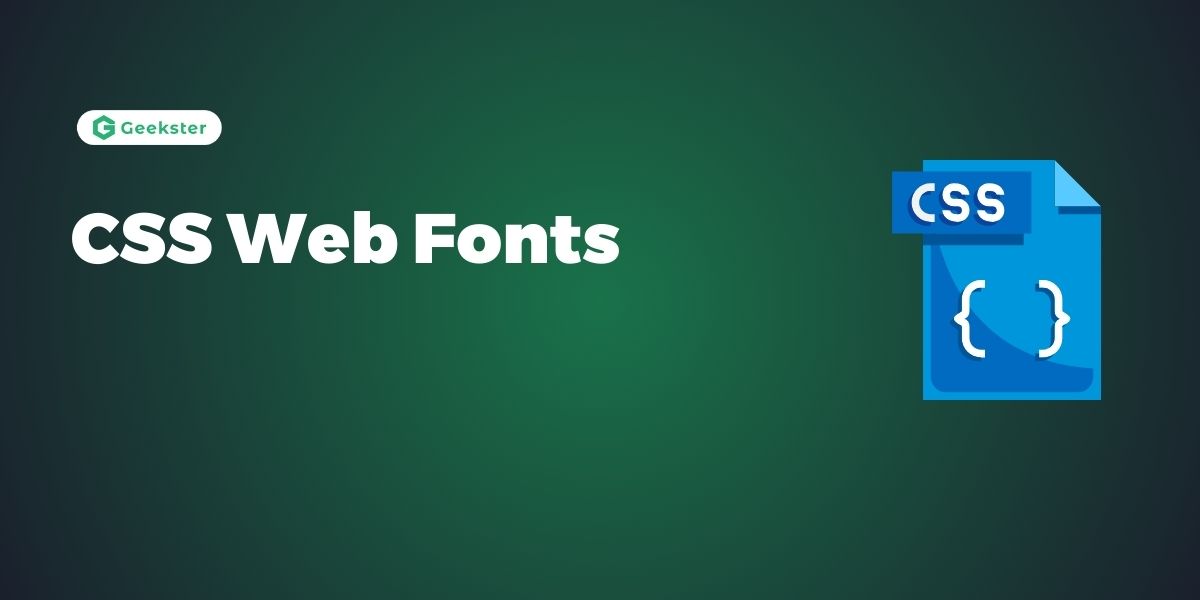Introduction
The digital world of modern web design is absolutely incomplete without typography. Custom typography can further enhance the all-round appeal and legibility of web content.CSS web fonts allow developers to integrate custom fonts into web pages, ensuring consistent typography across different devices and platforms. This paper focalizes important facets of CSS web fonts, like the @font-face rule, font formats, font stacks, and font loading strategies.
What Are CSS Web Fonts?
A web server downloads fonts to a user’s device when the user opens the requested web page. It helps the web designer use a myriad of fonts other than the default fonts available across most operating systems, hence delivering flexibility and creativity to design.
The @font-face Rule
The @font-face rule is what underlies the use of web fonts in CSS. It allows developers to describe fonts and specify sources from which they can fetch them for use in CSS styling. Here is a very basic example of how the @font-face rule works:
@font-face {
font-family: 'CustomFont';
src: url('customfont.woff2') format('woff2'),
url('customfont.woff') format('woff');
}In this example, the custom font is defined with a name (CustomFont), and the src property specifies the URL to the font files.
Font Formats
Font files come in several formats, each with its unique features and advantages:
- TrueType (TTF): It supports both web and print applications..
- OpenType (OTF): An extension of TTF, offering additional features like advanced typographic capabilities.
- Web Open Font Format (WOFF): Specifically designed for web use, offering compression for faster loading.
- Web Open Font Format 2 (WOFF2): An improved version of WOFF, with better compression and performance.
To ensure compatibility across different browsers and devices, it’s recommended to include font files in multiple formats.
Defining Fonts with @font-face
Here’s a more detailed example of defining a custom font using the @font-face rule:
@font-face {
font-family: 'CustomFont';
src: url('customfont.woff2') format('woff2'),
url('customfont.woff') format('woff');
font-weight: normal;
}
@font-face {
font-family: 'CustomFont';
src: url('customfont-bold.woff2') format('woff2'),
url('customfont-bold.woff') format('woff');
font-weight: bold;
}In this example, two different font weights (normal and bold) are defined for the custom font.
Font Stacks
Now, declaring custom fonts within a webpage also requires fallback font stacks to ensure readability in case the custom font fails. A developer can specify a list of fonts inside a font-family property with fallback generic font families:
body {
font-family: 'CustomFont', Arial, sans-serif;
}Font Loading Strategies
Optimizing font loading performance is crucial for a good user experience. Here are some strategies:
- Font Preloading: Use the
<link rel="preload">tag to preload fonts, reducing the time they take to load. - Font Display Descriptors: Control how fonts are displayed during loading using the
font-displayproperty (e.g.,swap,fallback,optional). - Font Loading Events: Use JavaScript to manage font loading and provide feedback to users if fonts take too long to load.
Conclusion
CSS Web Fonts provide flexibility to the designer as they allow the use of fonts that are not custom seulem alone on Web Pages to allow better typography and design aesthetics. This is possible with the @font-face rule and the declaration of font files in several formats to be compatible with all browsers and devices. Keeping in mind an array of design possibilities using web fonts, it is also worth taking into consideration the performance implications and optimizing font loading for a better user experience. On this ground alone, web fonts, implemented in CSS, show themselves quite essential when it comes to designing appealing and engaging web interfaces.
Frequently Asked Questions
Web fonts in CSS refer to custom fonts that are not installed on the user’s device but are downloaded from a web server when needed. They allow web designers to use a wide range of fonts in web pages, enhancing typography and design options.
To use web fonts in CSS, you need to include the @font-face rule, specifying the font-family name and the URL to the font files on your web server. Then, apply the custom font to text elements using the font-family property in CSS.
It’s recommended to include font files in multiple formats such as WOFF, WOFF2, TTF, and OTF to ensure compatibility across different browsers and devices. WOFF and WOFF2 formats are widely supported and offer better compression for faster loading.

